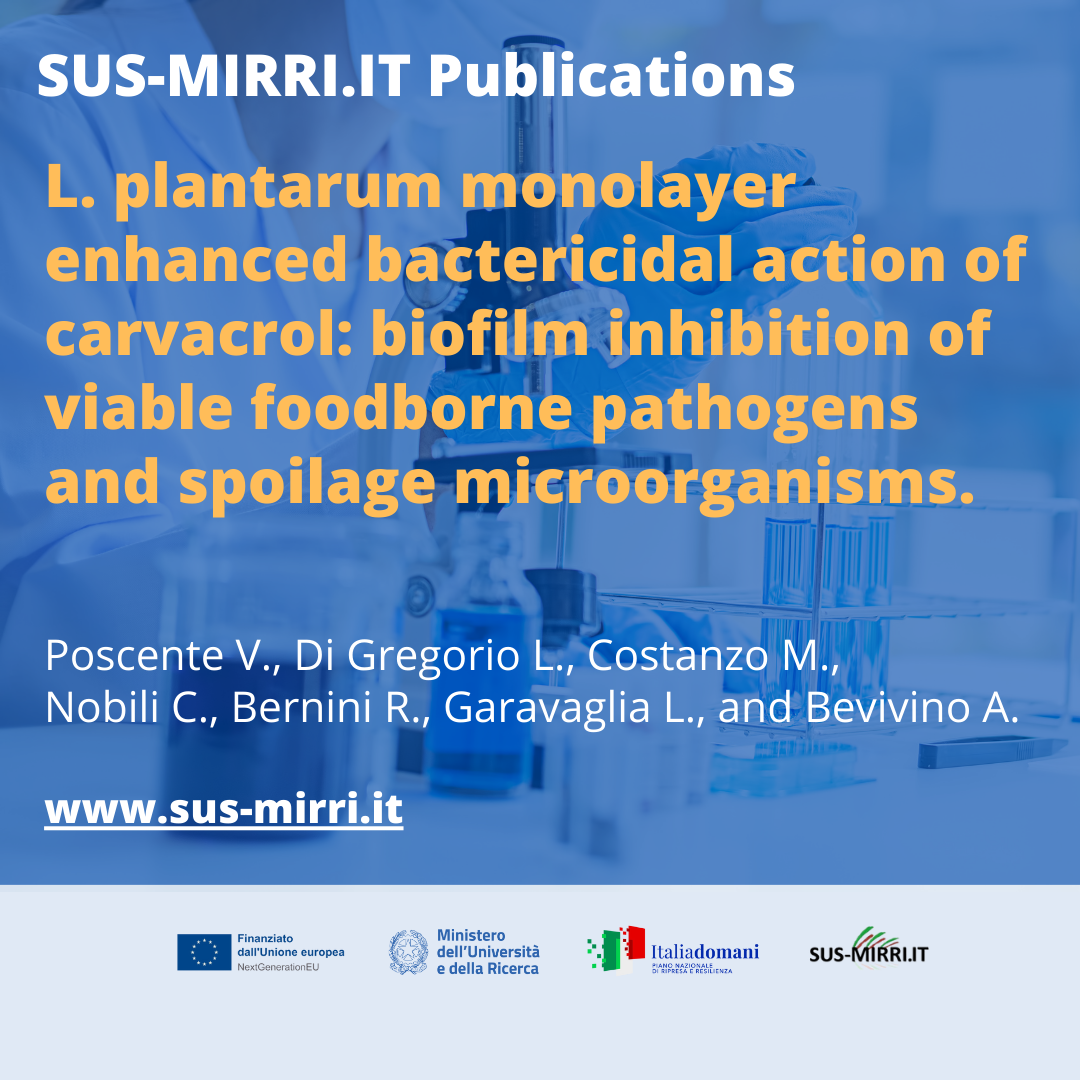Poscente V., Di Gregorio L., Costanzo M., Nobili C., Bernini R., Garavaglia L., and Bevivino A. (2023) L. plantarum monolayer enhanced bactericidal action of carvacrol: biofilm inhibition of viable foodborne pathogens and spoilage microorganisms. Front. Microbiol., Sec. Food Microbiology Vol. 14 – 2023 | doi: 10.3389/fmicb.2023.1296608
The prevalence of biofilm-associated microorganisms and the increasing use of ready-to-eat fresh products represent the current duality the food industry must address. Innovative and eco-friendly antibiofilm solutions and appropriate microbiological food control systems are urgently needed to improve food quality and safety. This study aimed to investigate the in vitro combined efficacy of carvacrol with a pre-formed biofilm monolayer of the probiotic Lactiplantibacillus plantarum DSM 20174. The antimicrobial activity of carvacrol against both planktonic and sessile cells of foodborne pathogens and spoilage microorganisms, alone or in the presence of the pre-formed biofilm of L. plantarum, was investigated by culture-based methods along with flow cytometry (FCM) to monitor cells’ cultivability and viability. The synergistic action of carvacrol and the pre-formed biofilm of L. plantarum was evaluated in the 96-well plates. The results showed that L. plantarum pre-formed biofilm monolayer enhanced the antimicrobial effect of carvacrol determining a bactericidal action while the treatment alone induced the viable but not culturable (VBNC) cell state only. Furthermore, the great efficacy of the combined treatment allowed the application of a lower concentration of carvacrol (100 ppm) to achieve significant damage in cell viability. In conclusion, the incorporation of carvacrol into the L. plantarum pre-formed biofilm represents a promising alternative for an antimicrobial functionalized ready-to-eat packaging.
See the publication here: https://www.frontiersin.org/journals/microbiology/articles/10.3389/fmicb.2023.1296608/full



